Have you ever come across the Print Management console in Windows 7 or Windows 8? I had heard of it before, but for years I paid it no mind. That changed recently when, by chance, it caught my attention. I started using it—and to my surprise, I really liked it. So, I decided it was time to share what I’ve learned with our readers and introduce a more efficient way to manage printers and drivers.
Where to Find the Print Management Console
In both Windows 7 and Windows 8, the Print Management console is included as part of the Administrative Tools. However, it’s not available in every edition of Windows. Only users running Windows 7 Professional, Ultimate, or Enterprise can access it. In Windows 8, it’s limited to the Pro and Enterprise editions.
While searching for “Print Management” in the Start Menu on Windows 7 will bring up the correct result, doing the same in Windows 8’s Start screen won’t work as expected. That’s why the most reliable way to access it is through the Control Panel: navigate to System and Security → Administrative Tools.
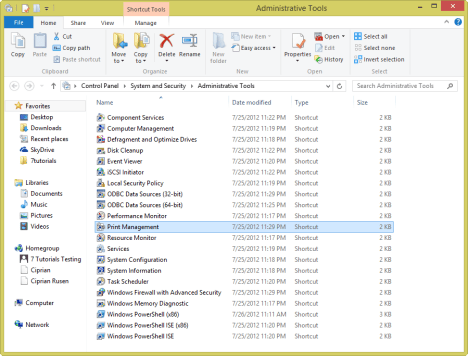
Print Management Console - Administrative Tools
This method works in both Windows 7 and Windows 8.
When you open Print Management for the first time, the window will appear similar to the screenshot shown below.
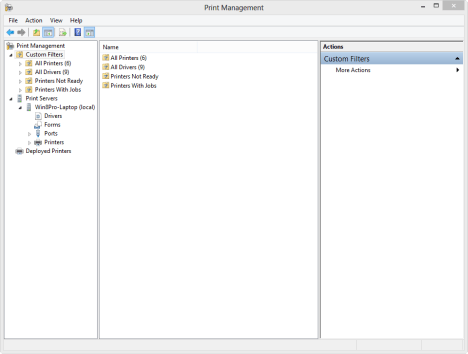
Print Management Console - Administrative Tools
How to Work with the Print Servers Section
Even though Print Servers is the second section on the left, I would like to showcase it first, as it is the most interesting part of the Print Management console.
Under Print Servers you find your computer. If you are part of a network domain and you have administrative permissions over it, you will see also other computers from that domain. For each computer listed, there is information about drivers installed, printing forms, ports used and the printers installed.
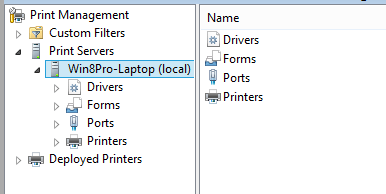
Print Management Console - Administrative Tools
The Drivers section shows all print drivers installed on the selected computer, including those added by software that simulates a printer.

Print Management Console - Administrative Tools
By right-clicking on a driver, you can manage various settings, such as isolating it from other drivers or viewing its properties. You also have the option to delete the selected driver.
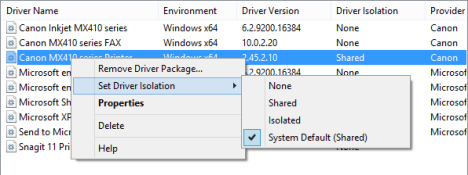
Print Management Console - Administrative -Tools
Next is the Forms section, where you’ll find a list of all available print forms that can be used by your printers. Each form includes helpful details such as its width, height, and type.
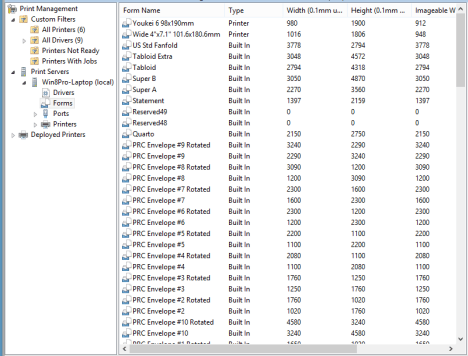
Print Management Console - Administrative Tools
If you’re unsure about the dimensions of an A3 page, you can simply look it up here and see its size listed in millimeters pretty handy, right? One key column in this list is Type. The most common values are Built-In and Printer. Built-In forms come preloaded with Windows and cannot be modified or removed. Printer forms, on the other hand, are added by specific printers and supported by them. These can be deleted by right-clicking on the form and selecting Delete but only do so if you’re sure you won’t need them again.
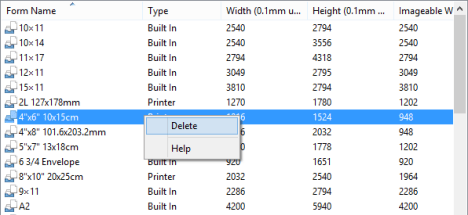
Print Management Console - Administrative Tools
The third section is Ports, which displays all printing ports installed and available on your computer. Some of these are standard ports that come preconfigured with your system and may never be used, but they’ll still appear in the list as available.
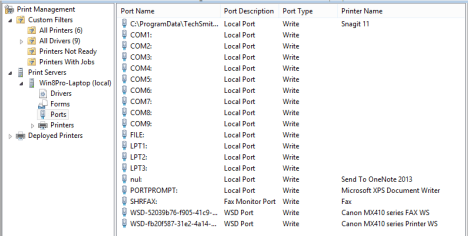
Print Management Console - Administrative Tools
You can right-click on a port to either configure or delete it. Deleting a port means it will no longer be available for use. If a physical printer is connected to your computer through that port, it will stop working, and you’ll need to reinstall the printer to restore functionality.
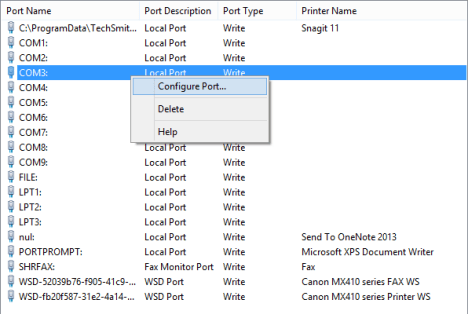
Print Management Console - Administrative Tools
Another option is to configure a port. However, few ports can be really configured.

Print Management Console - Administrative Tools
The most interesting section is called Printers. It displays all installed printers, including virtual or software-based ones. Right-clicking on any printer brings up a wide range of configuration options. You can open the print queue, pause printing, deploy the printer via Group Policy across a network domain, set default print settings, manage sharing, print a test page, edit properties, delete or rename the printer, and access Help.
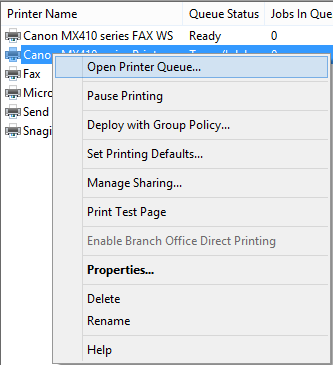
Print Management Console - Administrative Tools
All this just from the right click menu.
How to Work with Custom Filters
The first section, Custom Filters, presents the same information found under Print Servers, but uses configurable filters to display only the items that are relevant to you.
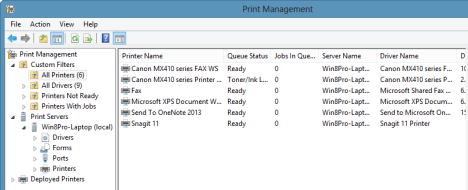
Print Management Console - Administrative Tools
Some of the most interesting filters are Printers With Jobs and Printers Not Ready.
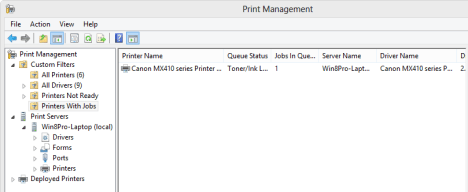
Print Management Console - Administrative Tools
For example, the Printers With Jobs filter displays the printers that are printing something at the moment and how many jobs they have in queue.
Don't Forget to Use the Actions Menu or the Right Click on Categories
The Action menu in the Print Management console is a valuable tool, offering the same options you’d see when right-clicking on a category.
For example, within the Custom Filters section, it allows you to create personalized filters for printers or drivers.
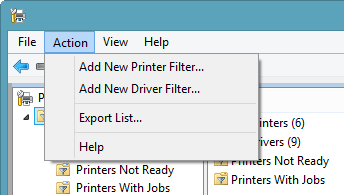
Print Management Console - Administrative Tools
n the Print Servers -> Drivers section, it allows you to add new drivers or manage existing ones.
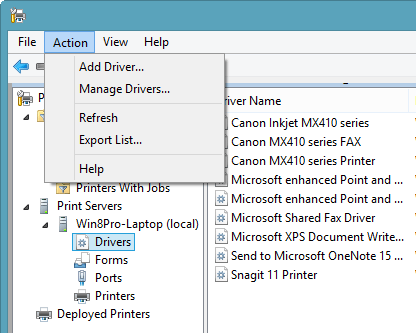
Print Management Console - Administrative Tools
In the Print Servers -> Printers section, it offers the possibility to export all your printers to a file or import printers from a file.
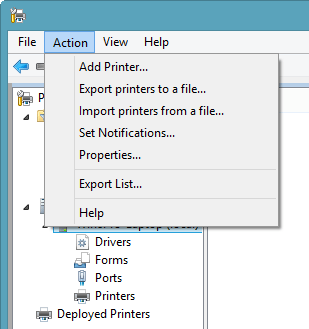
Print Management Console - Administrative Tools
Very useful options if you ask me, so don’t hesitate to experiment and learn this tool and all its contextual options.
Conclusion
As you’ve seen in this tutorial, the Print Management console is a powerful and convenient tool. Once I became more familiar with it, I found it far more efficient than the traditional Devices and Printers panel for managing printers. For more useful Windows tips and tricks, be sure to check out our recommended articles below.

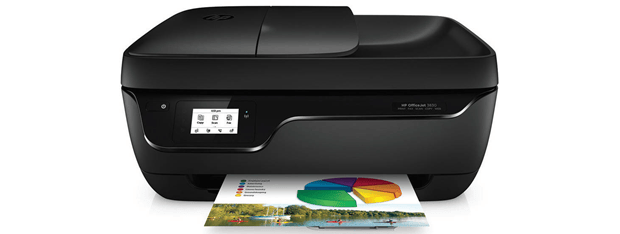

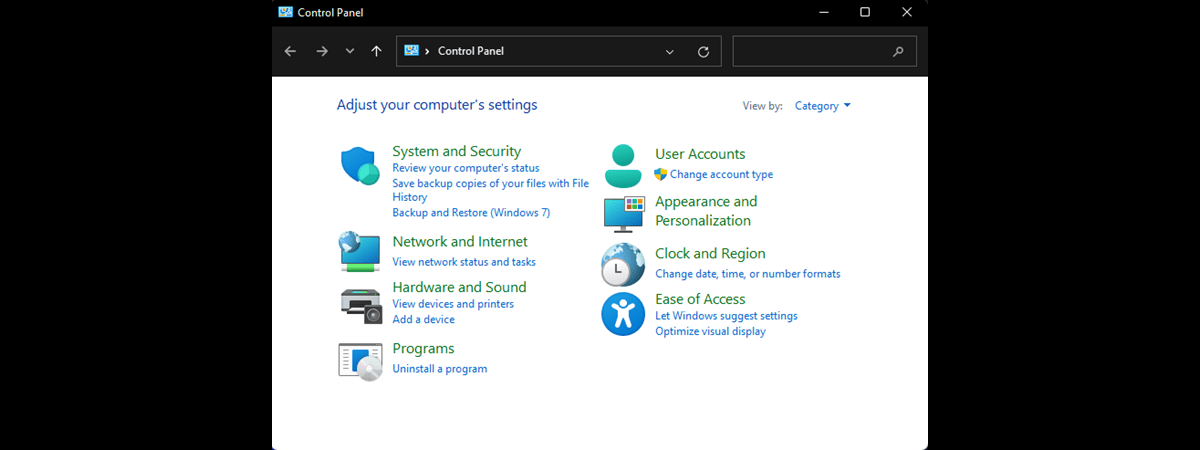



Leave a Reply